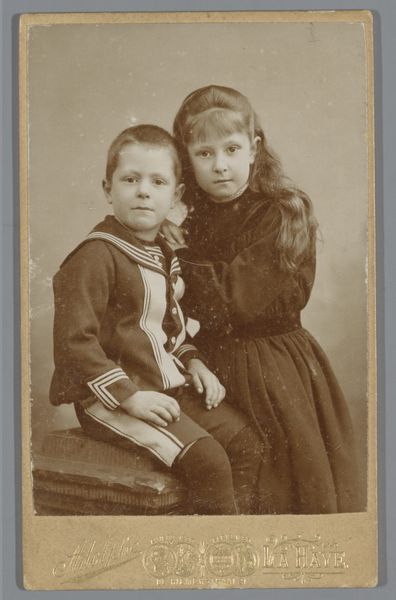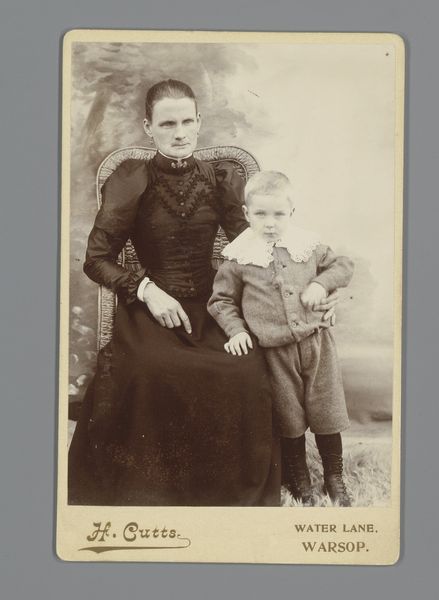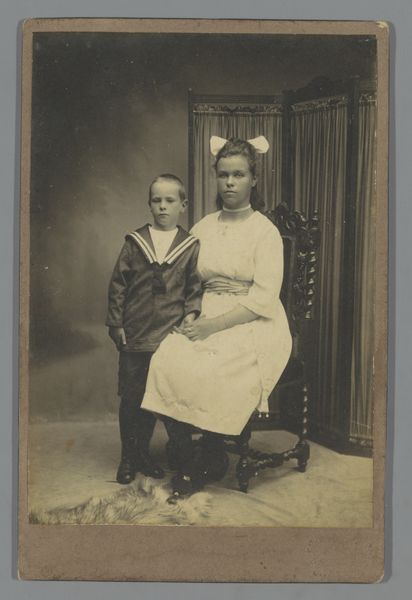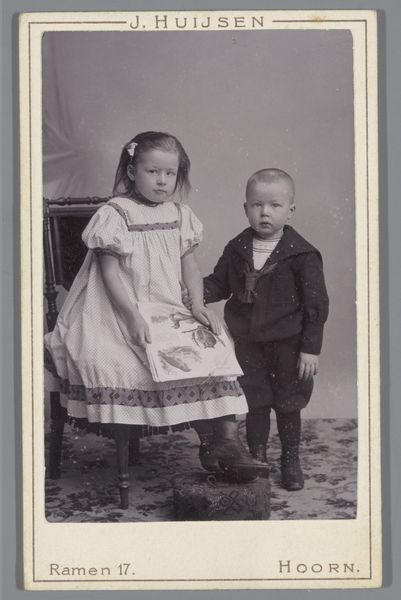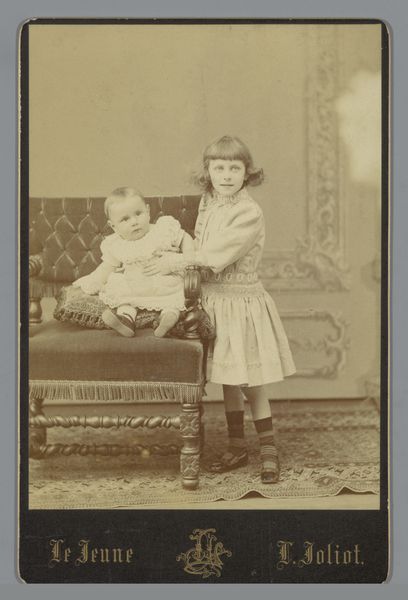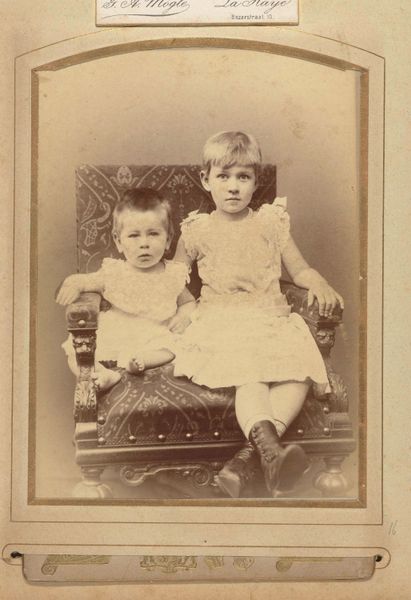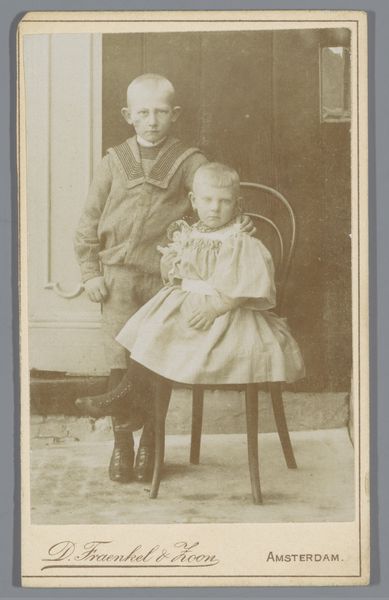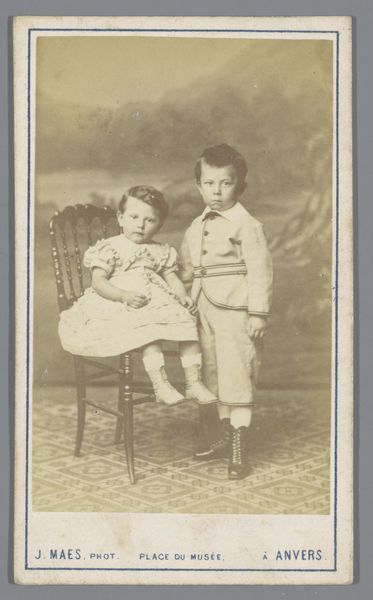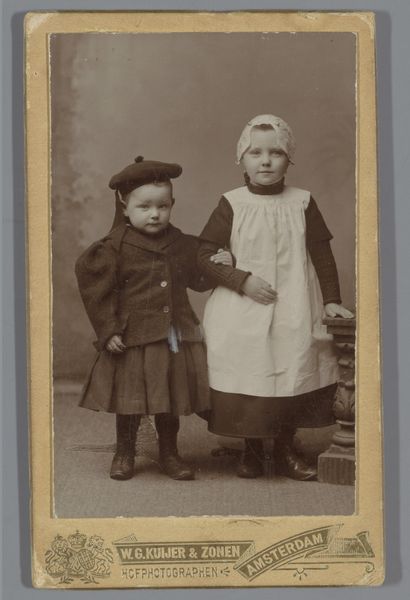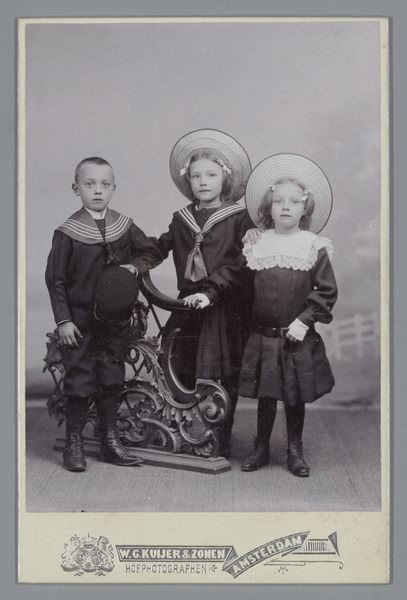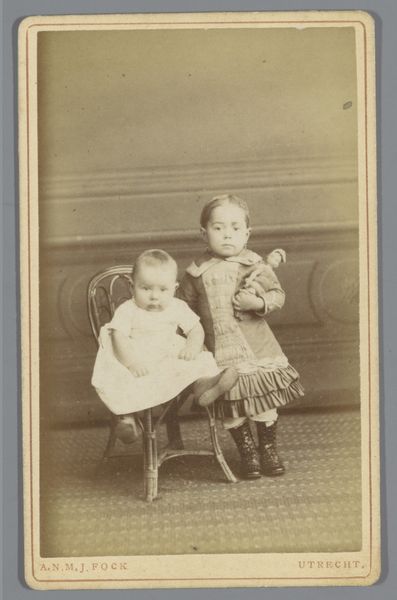
Dimensions: height 147 mm, width 102 mm
Copyright: Rijks Museum: Open Domain
Editor: This photograph, titled "Portret van een onbekende jongen en meisje," by Samson & Co., is a gelatin silver print from sometime between 1900 and 1915. It depicts a brother and sister. There's a formality to it, but also a certain intimacy in their gaze. What do you make of this photograph? Curator: The photograph functions as more than just a portrait. Think of its historical context; photography in the early 20th century was becoming more accessible, shifting from a luxury to a means of documenting everyday life, particularly for the burgeoning middle class. So, consider what statements could the sitters and client make by way of such photography? What did having photographic portraits signal about a family's status and aspirations? Editor: That's interesting. I hadn't thought about the photograph itself as a status symbol. I was focusing on their clothes. Curator: Precisely. And the clothes, poses, even the backdrop provided by the studio were all carefully curated to project a specific image. We should see such early photographs as active participation within class dynamics of the period, rather than neutral portraits of an uneventful everyday life. This can especially inform discussions of the public role and potential of art as a whole, too. What impression do *you* get of the pair from their outfits? Editor: They look… respectable. The boy in his sailor suit, the girl with her bow and lace collar. Middle class, definitely aspiring to a certain level of refinement. It's so different from how we document ourselves today with quick snapshots. Curator: Exactly. The staged nature speaks volumes about societal values and the role photography played in shaping and reinforcing those values. How does seeing this picture through that lens shift your perspective? Editor: It makes it less about individuals and more about how people wanted to be seen. More than mere personal photography, it’s really quite social, cultural and public, a projection into a desired class, or perhaps just an averageness. I hadn’t considered that until now. Curator: It highlights the inherent social and political aspects of visual representation itself.
Comments
No comments
Be the first to comment and join the conversation on the ultimate creative platform.
